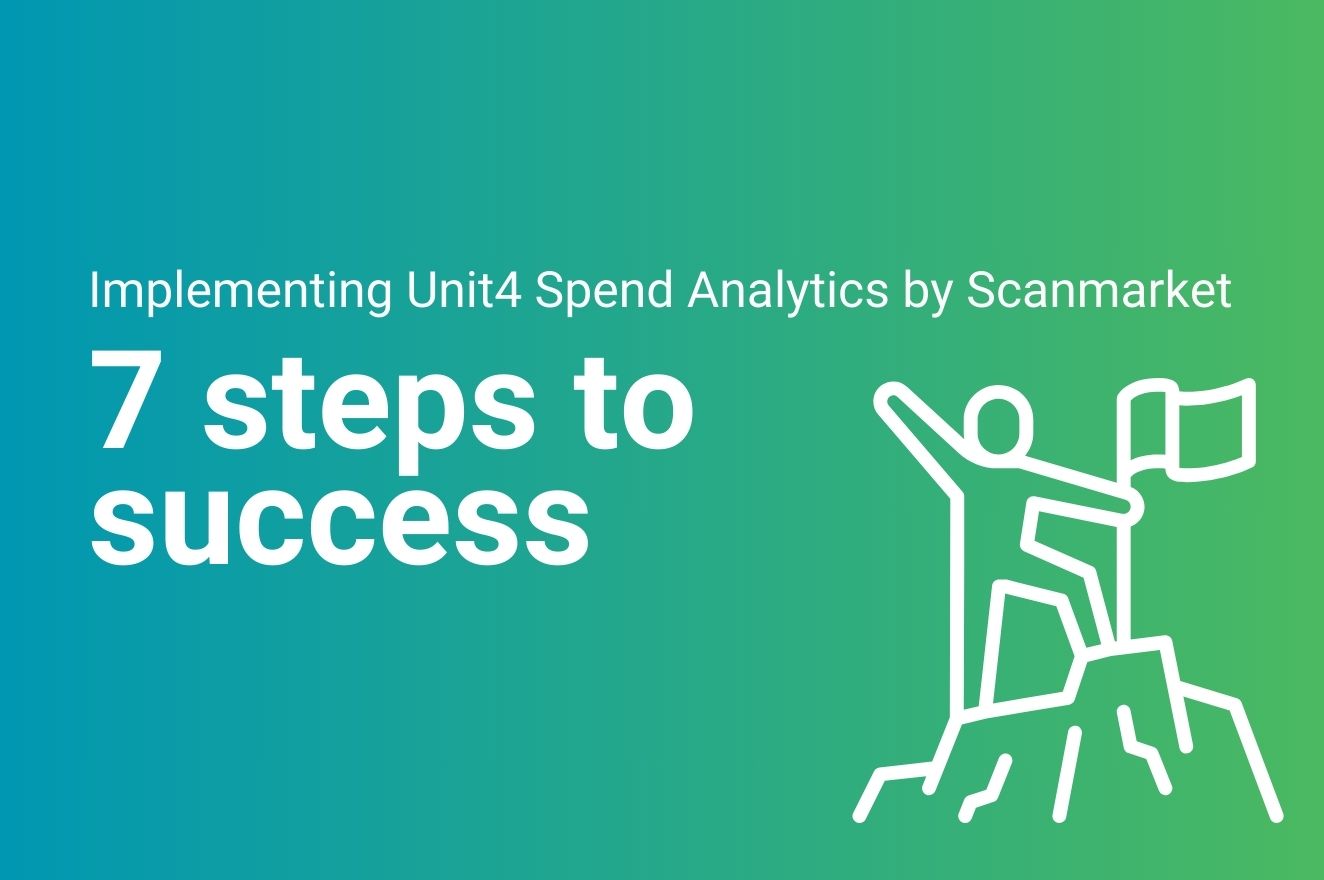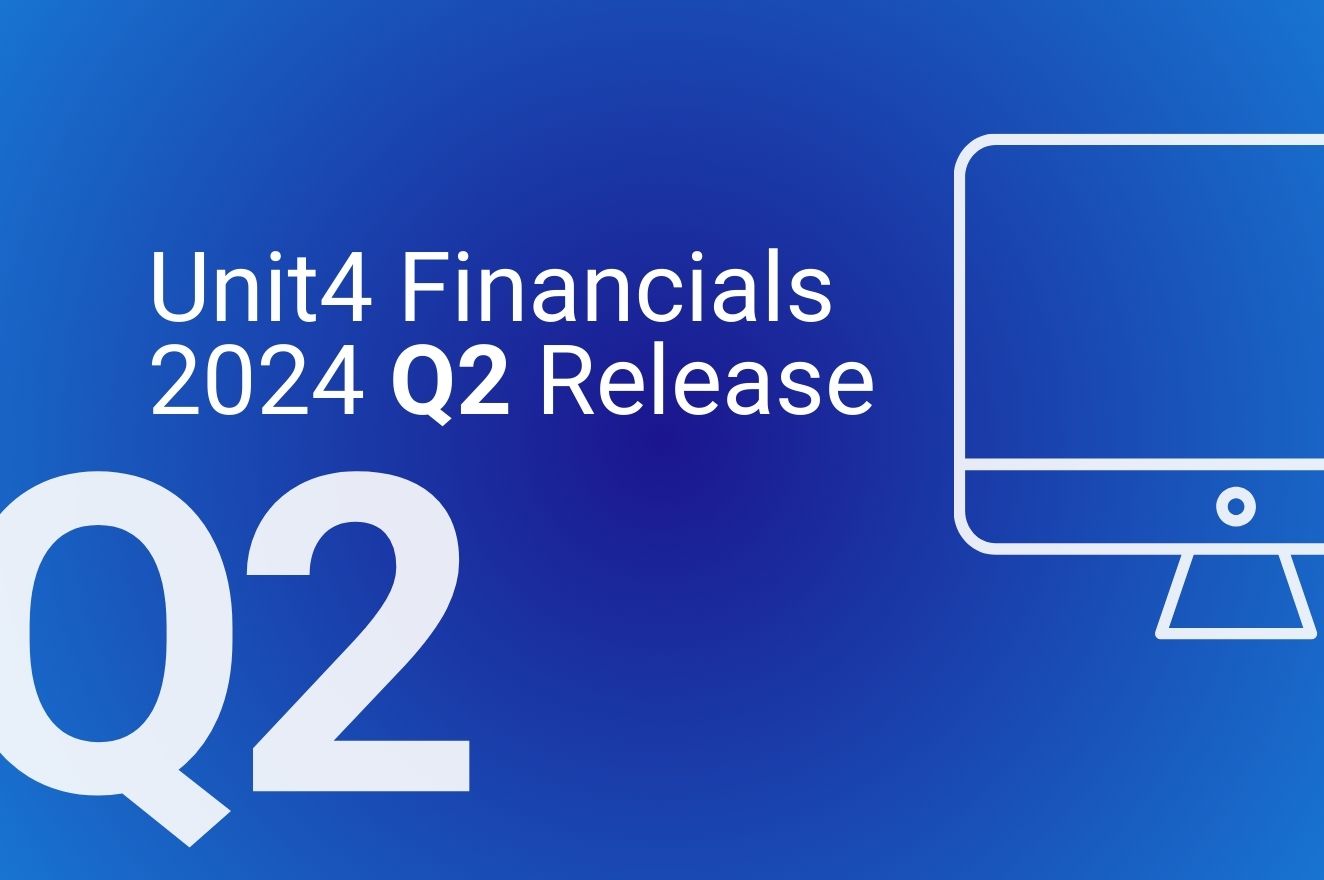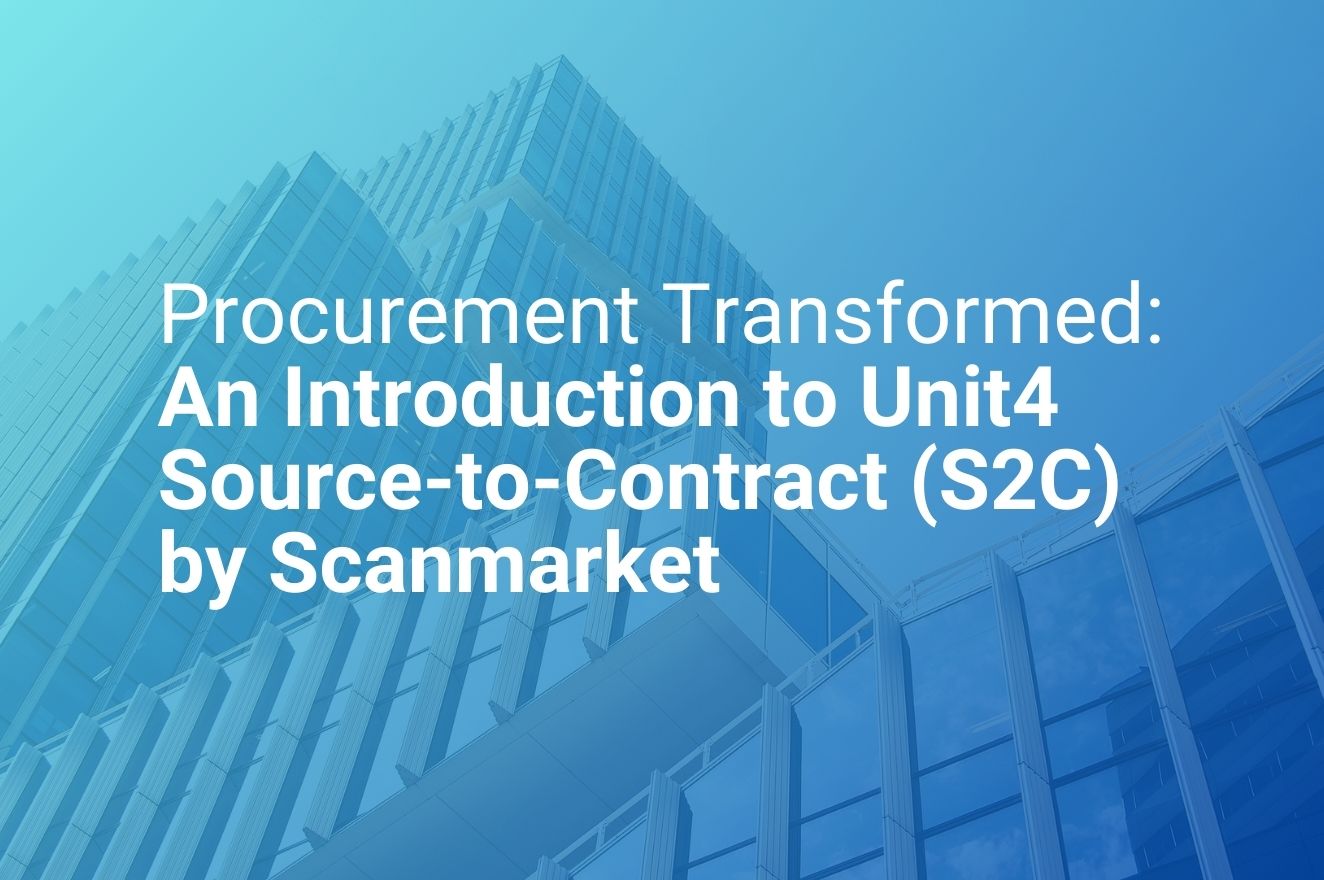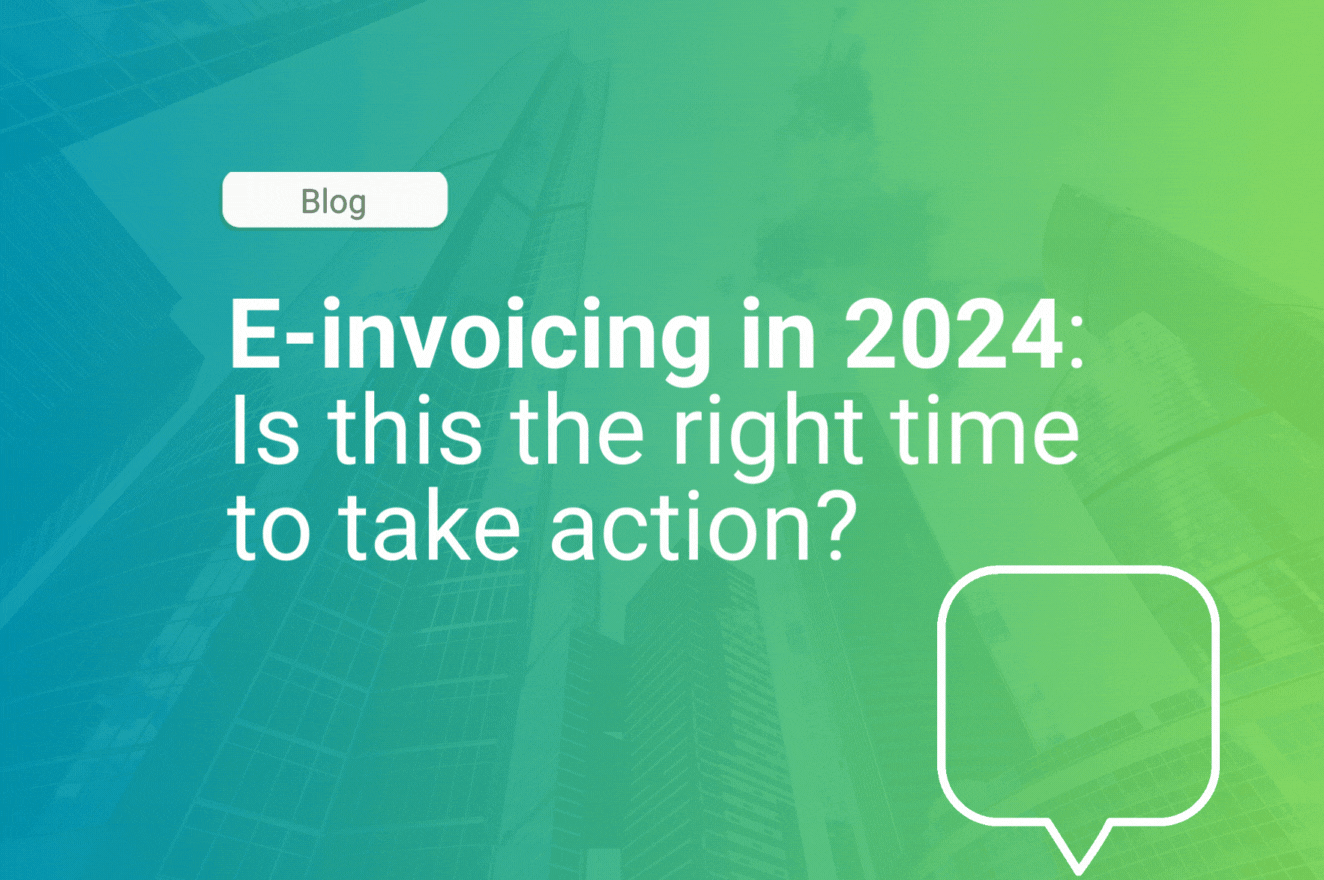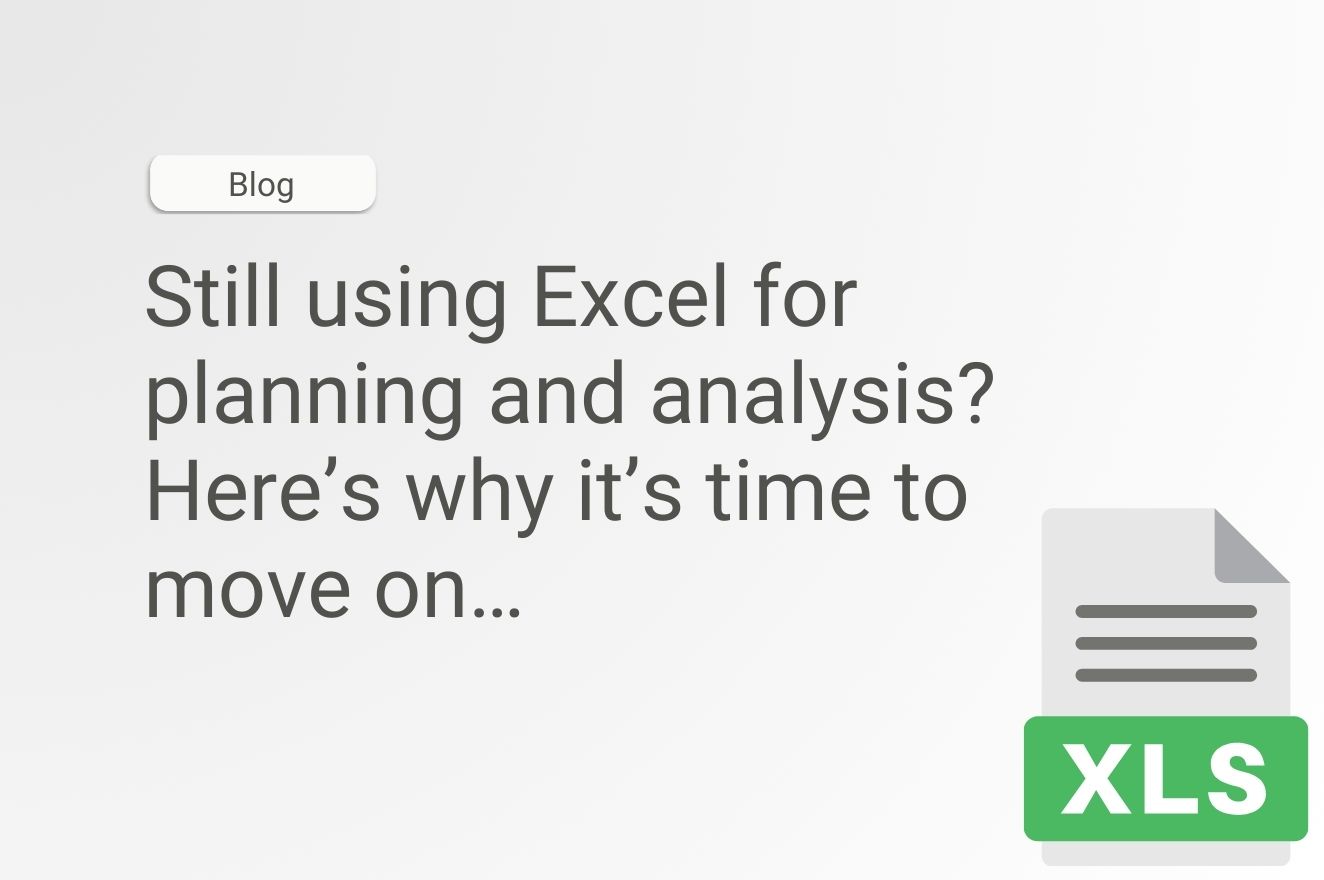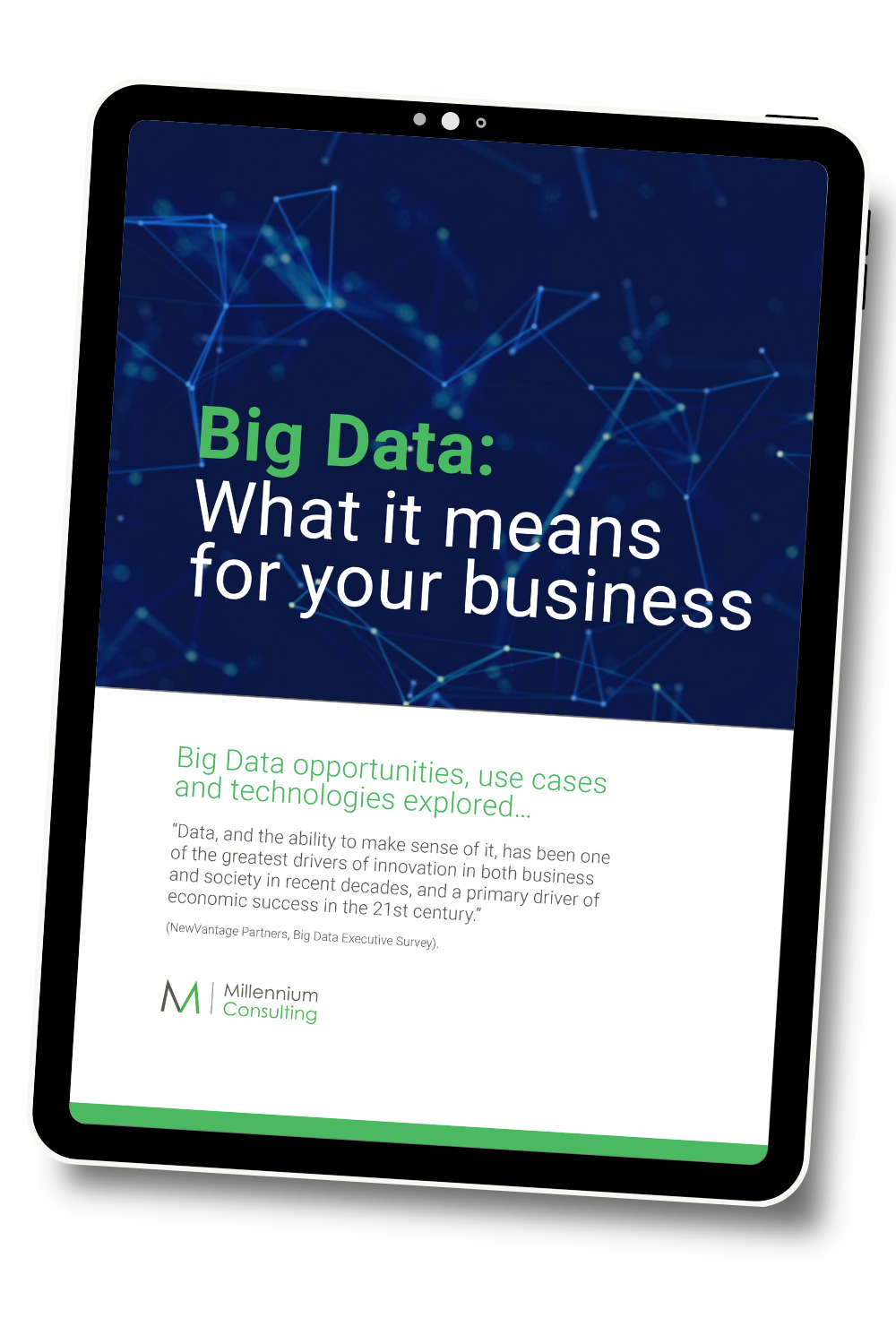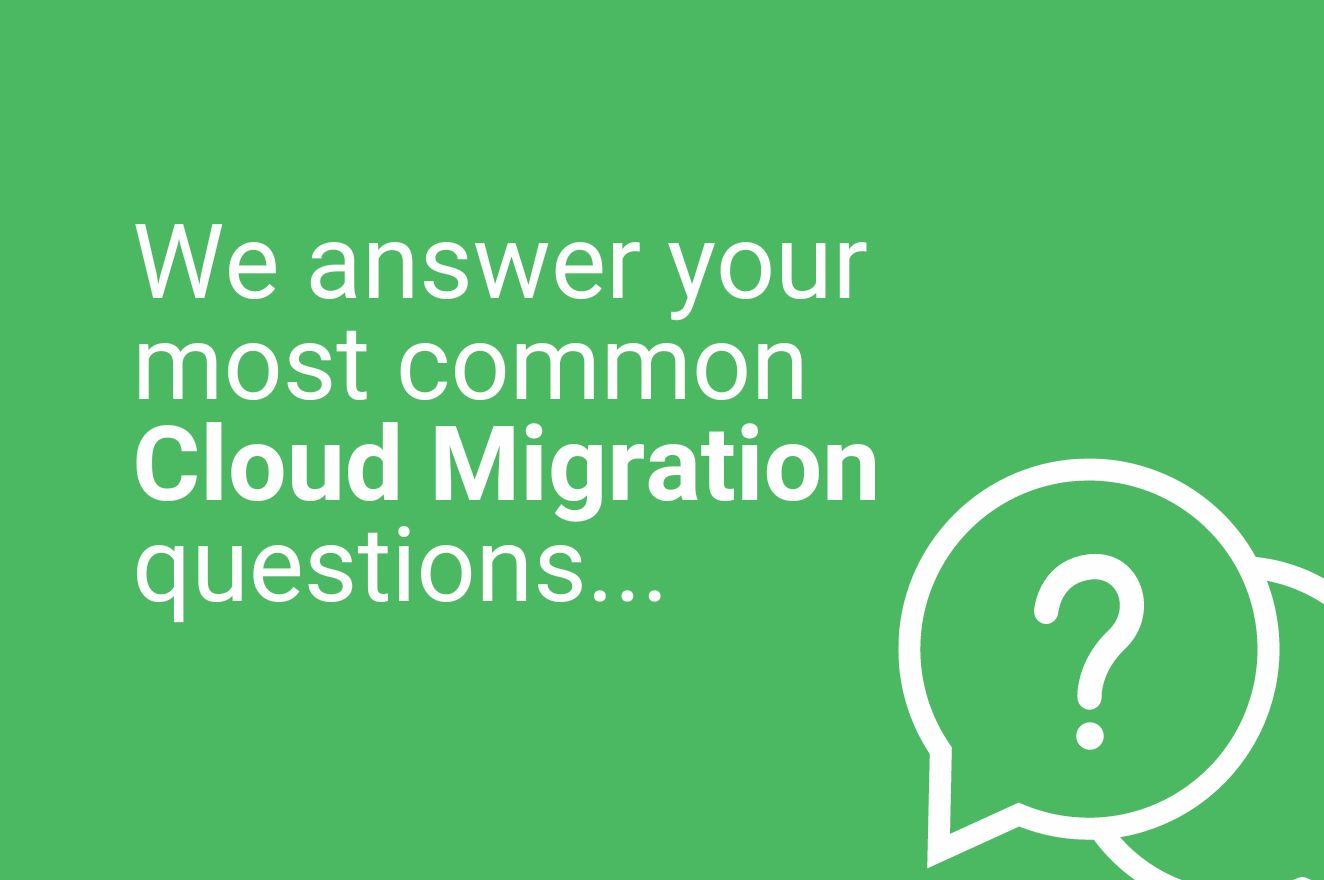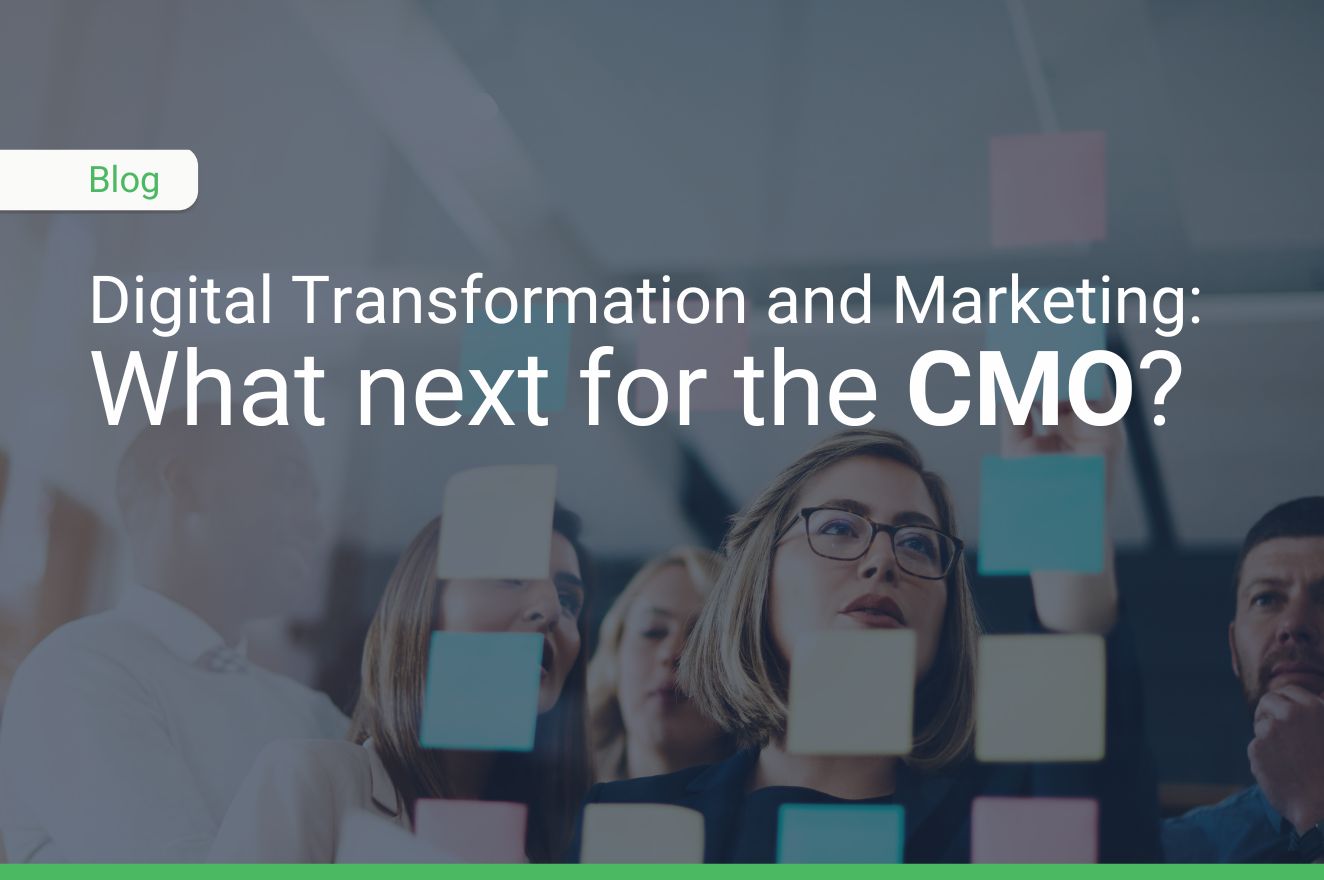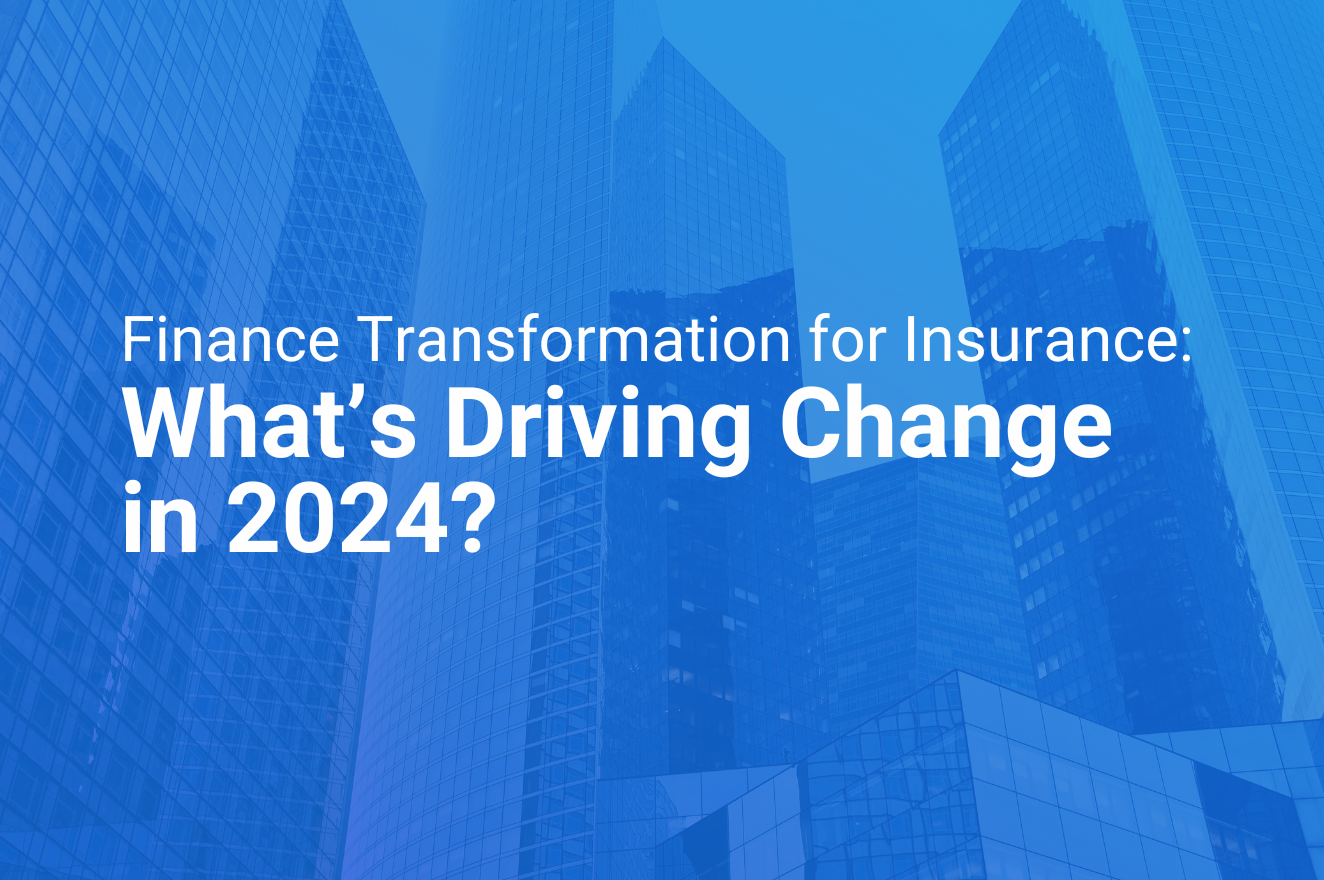Implementing Unit4 Spend Analytics by Scanmarket: 7 steps to success
Implementing Unit4 Spend Analytics by Scanmarket
7 steps to success
What are we buying, and from whom? What can we do to make procurement work better for our business? Available as part of Unit4’s range of source-to-contract modules, Unit4 Spend Analytics by Scanmarket delivers the insight procurement managers and finance leaders need to understand historical and current spend, and to guide more effective decision-making.
So how exactly does it work - and what does it take to get up-and-running? Here’s how successful Unit4 Spend Analytics implementation is achieved in just seven simple steps…

Step 1: Setting up your environment
How will you access and bring together our spend data? And, equally as important, will this module work with our existing ERP, P2P and other systems?
For initial setup, you provide a flat file export of your spend data for typically the last 6-12 months from wherever it resides (e.g. your ERP or procurement system). Behind the scenes, Unit4 Spend Analytics standardises, categorises, and deduplicates that data where necessary, correcting any errors, and flagging any outliers.
Step 2: Export an initial report
Unit4 Spend Analytics enables you to connect, explore, visualise and understand all your spend data in one place. And, as you’d expect with Unit4, the solution has an “integrate with everything” approach at its core.
This includes integrations with a wealth of popular systems, including ERP (Salesforce, Sage, SAP, Oracle, Microsoft Dynamics), and procurement systems (Basware, Coupa, Sievo, TradeShift).
Rest assured, we can take care of the heavy lifting elements required in provisioning your environment. This includes identifying which data sources will be used for spend analysis, and setting up an SFTP (Secure File Transfer Protocol) server where the relevant data files will be uploaded. Data ingestion pipelines, mapping fields, user credentials and authentication methods are all configured according to your needs and preferences.
Step 3: Enhancement of your data and configuration of your environment
Unit4 Spend Analytics gives visibility on spend across all areas of your business via your choice of dashboard. But how can you be confident that the information in front of you is accurate? This is where the AI-driven data cleansing and enhancement comes in.
Behind the scenes, elements such as vendor names, commodity codes, units and dates are standardised. Additional supplier information and market data can be integrated and transactions can be categorised into predefined spend groupings according to your needs. On top of this, duplicate records are identified and merged, and common data entry errors can be automatically corrected (or else flagged up, depending on your preferences).
Step 4: Tweaking for accuracy and usability
Unit4 Spend Analytics gives visibility on spend across all areas of your business via your choice of dashboard. But how can you be confident that the information in front of you is accurate? This is where the AI-driven data cleansing and enhancement comes in.
Behind the scenes, elements such as vendor names, commodity codes, units and dates are standardised. Additional supplier information and market data can be integrated and transactions can be categorised into predefined spend groupings according to your needs. On top of this, duplicate records are identified and merged, and common data entry errors can be automatically corrected (or else flagged up, depending on your preferences).
Step 5: Initial usage
By now, your spend data has been cleansed, enriched, and categorised in line with your preferences. It’s now time to start putting Spend Analytics to work.
Featuring interactive charts and graphs, the solution dashboard aims to transform your spend data into actionable insight. Among other things, this should make you better equipped to identify spend risks, spot opportunities for cost savings, and ensure PO spend compliance.
Step 6: Collaborative refinement
As well as enabling you and your team to get familiar with the solution, thorough pilot testing and initial usage can also highlight further scope for optimisation. Examples might include the following:
- Opportunities to rationalise your spend category structure by addressing overlaps/redundancies.
- One of your first projects using Unit4 Spend Analytics may involve identifying ways to consolidate suppliers to achieve better terms. If so, it may be appropriate to further update your spend categories to reflect these changes.
- You may have identified possible further external data sources to enrich your analysis (e.g. to benchmark prices, supplier performance and/or total cost of ownership).
- Whatever you need in terms of additional configuration, spend categorisation, dashboard customisation, and setting up data feeds, we can help.
Step 7: Continuous refreshment of data
How do you ensure that up-to-date data is transferred from your ERP and other sources to your spend analytics solution? Unit4 Spend Analytics offers a choice of data transfer methods.
Especially useful for businesses with specific regulatory requirements linked to auditing and tracking, you can carry out manual data transfers using excel or any other tabular file format via your SFTP server.
Alternatively, to save time, to reduce your manual workload, and to facilitate real-time (or ‘near-time’) updates, you can opt for automated data transfer between your ERP and/or other sources and Unit4 Spend Analytics at intervals that best suit your business needs.
Spend Analytics forms part of Unit4 S2C by Scanmarket: a full suite of solutions designed to give users enhanced oversight and control over spend, the ability to make better, data-driven procurement decisions, and also maintain compliance. Find out more here.
To discuss what’s possible for your business, and to set up a demo, speak to us today.
Unleashing Efficiency: Why SaaS Outperforms On-Premise Software
Unleashing Efficiency: Why SaaS Outperforms On-Premise Software
Choosing between Software as a Service (SaaS) and on-premise software is crucial for finance professionals navigating the digital landscape. Here’s why SaaS is becoming the preferred choice.
Cost efficiency and focus
SaaS eliminates the need for hefty upfront investments. Unlike on-premise solutions, which require substantial capital for licenses, hardware, and infrastructure, SaaS uses a subscription model. This ensures cost predictability and accessibility, making advanced software available to businesses of all sizes. Outsourcing software maintenance and infrastructure management allows companies to focus on core activities, fostering innovation and strategic growth.
Automatic updates and easy maintenance
With SaaS, software updates and maintenance are handled by service providers, ensuring access to the latest features and security patches. This saves time and resources, enhancing performance and security. SaaS applications can be quickly deployed, enabling rapid implementation of new tools and functionalities for a competitive edge.
Superior User Support
SaaS offers streamlined user support with cloud-based accessibility, efficient remote assistance, and prompt issue resolution. This leads to higher user satisfaction and productivity. Monitoring tools for software performance enable proactive identification and swift resolution of potential issues, minimising downtime. SaaS support teams also prioritise data security, addressing security concerns and compliance inquiries promptly.
Scalability
SaaS solutions are designed for scalability. As businesses grow, they can easily adjust subscriptions to meet increased demands. This flexibility allows organisations to optimise costs by paying only for the resources they use.
SaaS offers clear advantages over on-premise software: cost-efficiency, automatic updates, superior user support, and scalability. Millennium Consulting has been involved in digital transformation and change management for more than three decades. And in recent years especially, that transformation typically involves helping organisations make the move to the Cloud.
Our migration experts are on hand to deliver a rapid, successful move to SaaS, enabling you to extract maximum value for your new deployment model – with minimum disruption to your business.
Unit4 Financials 2024 Q2 Release
Unit4 Financials by Coda 2024Q2 was made available on 11th June 2024.
The new release contains all the previous Unit4 Financials by Coda functionality, new features, security updates, and customer-identified fixes to extend the best-in-class software solution. Unit4 has addressed many customer-reported issues and hence always encourages customers to upgrade to the latest release.
Highlights of the 2024Q2 release include:
Administration:
Output Device Master
A new device type is available called ‘HTTP POST’ that will post data to an HTTP/HTTPS endpoint.
Third-Party Library Attribution in the Product
The third-party library attribution information is now accessible from the main product on the About Financials page in Legal Notice section.
Billing:
Document Master
The document numbers used within Billing will now be sequential by year when the Document master is set to use Year or Year/Period prefixed numbers and “Reset number on year change” is enabled.
Within Billing Document Master, if ‘Reset number on year change’ is enabled, the user now has the ability to edit the number to be used as the starting document number for the subsequent year(s).
Finance:
Open/Close Periods
Open/Close Periods can now be managed using a new webservice OpenClosePeriods.
Element Master
The Invoice document and Mapping master can be specified on a Supplier element for use in Electronic Invoicing (for future use)
Company Master
The Mapping master can be specified on the Company for use in Electronic Invoicing (for future use)
External Archive to Remote Database
A new field ‘Database server name’ has been added to the archive header master. This specifies the database server location and is only available for Microsoft SQL Server databases.
Microsoft Azure SQL is now supported as an external archive database when the main Financials database is Microsoft SQL Server
Electronic Invoicing:
Mapping Master
A new Mapping Master has been added for Electronic Invoicing to define how data in the UBL is mapped to the transaction to be created in Financials. You also have the ability to map fixed text (for future use)
Technical:
Deprecated features:
The .NET router has been deprecated. The final release has not been determined.
32-bit XL is deprecated. We recommend the use of 64-bit XL.
The Integration Toolkit Command Centre module (ITK) has been deprecated and will be removed in a future release. The final release has not been determined.
General Fixes/Updates:
- The appearance of unexpected items in the ‘Favourites’ and ‘History’ lists, which was associated with the use of menu content providers, has been corrected.
- The ‘Import existing domain user to Financials user mapping’ facility has been removed. This was causing errors where the old tables (com_usrmap and com_usrmaplist) were not present or had an incompatible collation.
- Daylight savings time is taken into account when setting the ‘Next run’ time for Scheduled tasks.
- Corrupted alert data caused a “Translated alert” error and prevented workflows from starting. Alert handling and workflow processing are now able to proceed without error in this situation.
- When Financials documents fail to post during Depreciation the Assets transactions will still be written if ‘Continue after errors’ is true.
- Cancelling an asset transfer now cancels the transactions for all assets involved in the transfer and the logs now report all sets of cancellations.
- The document numbers used within Billing will now be sequential by year when the Document master is set to use Year or Year/Period prefixed numbers and “Reset number on year change” is enabled
- It is now possible in Billing input to search on the line item short name.
- When changing the customer on an existing invoice in Billing where the address field is not displayed on the input template, the customer’s correct default address is now used
- It is now possible to select an element in input using an element filter, when the input template has been set to filter the element using the left/right list logic.
- An issue using reconciliation when selecting lines to be grouped across multiple pages and using the ‘Include Selected’ button has now been resolved.
- Show Work Item for Element Approval now correctly shows the Assisted Element view after the approval has been denied.
- The URL created when you export to Excel in Browse Details is the same as the URL created on the results screen in Browse Details.
- In table link a mnemonic can now be used for an element which specifies a substitution element.
- The response returned by the GetAttachments function of the WorkflowService is now valid according to the API definition. The primaryAttachment property is now always returned.
- Unsuccessful attempt to create a new company no longer leaves an invalid entry in table oas_cmpinv.
- On IBM i use of a remote DB2 database now works correctly.
- In Audit Trail, upgrades of the table LOG_PROCESSED from versions prior to continuous release (15.0.4) may not be correct. A script to correct this without the need to drop and recreate the table is available in the Audit Trail Technical Guide.
- It is now possible to retrieve and update data in multiple tabs concurrently, due to the removal of the requirement for transacted, repeatable-read of application state.
- Note: The Java EE server configuration will need to be updated to take advantage of this fix. Please refer to the Technical section in the release notes for more details on how to adjust existing installations.
- The Audit Trail Configuration Tool now runs when there is no configuration file in the “CodaHome\AuditTrail\Config” directory.
Further details on the new features, security updates and reported issues can be found in the release documentation.
The release documentation for this release (and previous releases) can be found in the documentation area on the community.
The software can be downloaded from the “Software” tab on Community4U.
Release dates for Cloud users
Unit4 Cloud customers are notified by Unit4 Cloud support when their pre-production and production systems will be updated. This information can also be found within the Cloud Services – Release Schedules area.
View the 2024 Release Schedule here
The Release Notes detailing the fixes and features within this release can be found in the Documentation area on Unit4’s Community 4U.
Are you making the most of Unit4 Financials by Coda?
Our Systems Review are designed to help you identify areas where you may be able to improve performance and ensure you extract the maximum benefit from your investment in Unit4 Financials by Coda.
Procurement Transformed: An Introduction to Unit4 Source-to-Contract (S2C) by Scanmarket
Procurement Transformed:An Introduction to Unit4 Source-to-Contract (S2C) by Scanmarket
According to a recent Amazon Business survey, 95% of decision-makers acknowledge that there’s room for procurement optimisation within their organisations. Unit4’s range of easy-to-implement source-to-contract (S2C) modules can deliver those all-important elements of visibility, control, insight, and efficiency that procurement managers and finance leaders are too often missing.
How can we curb erratic spending? Do existing supplier relationships represent the best value? Are procurement activities aligned with our broader goals? These are precisely the types of challenges that Unit4 Source-to-Contract (S2C) seeks to address.
Here’s a closer look at the solution and the benefits it can bring to your organisation.
Solution Snapshot: What Is Unit4 Source-to-Contract (S2C) by Scanmarket?
Overview
Unit4 S2C is a full suite of solutions designed to help optimise and manage source-to-contract processes, giving users enhanced oversight and control over spend, the ability to make better, data-driven procurement decisions, and also maintain compliance.
What’s included
The product suite comprises six modules. Unit4’s user-centric approach to adoption means that customers can choose to implement whichever modules are appropriate for their needs. All modules sit on a single S2C platform.
The modules are as follows:
- Unit4 Spend Analytics by Scanmarket. An analytics tool that delivers an accurate view of spend across all business units
- Unit4 eRFx by Scanmarket. Standardises tendering and supplier sourcing processes, and delivers the business intelligence you need to interrogate existing activity and identify under-performing arrangements
- Unit4 Contract Management by Scanmarket. Improves visibility into key contract information via a central repository
- Unit4 Supplier Management by Scanmarket. Automates the onboarding of suppliers, enabling you to access and report on all supplier data from a single repository
- Unit4 eAuction by Scanmarket. Provides structured processes to support negotiations, enabling like-for-like evaluation of potential suppliers and more rapid, accurate total cost of ownership (TCO) analysis
- Project Management by Scanmarket
Integrations
Its acquisition of leading S2C specialist, Scanmarket in 2022 means that Unit4 is able to offer a comprehensive range of S2C applications, fully integrated with its wider suite of ERP, HCM, FP&A, and Financials products on the Unit4 platform.
Users can also take advantage of Scanmarket’s open APIs, pre-built integration interfaces and tools to enable integration with existing ERP, supply chain management, and procurement systems from a wide range of vendors.
Deployment and Implementation
Unit4 S2C is 100% cloud-based, which helps ensure a quick implementation process. Typical implementation can take between just two and eight weeks, depending on how many S2C modules you wish to deploy.
How S2C helps solve common procurement challenges
Spend analysis
Problem: What are we buying, and who from? How much have we paid, and on what terms?
Even at the best of times, it’s important for buying managers and finance leaders to be able to answer these types of questions. Faced with squeezed margins and high costs, an accurate view of organisational spend is even more of a priority.
Too often, the data required for analysis is scattered across multiple departments and systems. It’s a recipe for poor decision-making, including duplicated orders across different departments and failure to capitalise on optimal payment terms.
Solution
Unit4 Spend Analytics by Scanmarket provides full visibility on company-wide spend via a pre-configured dashboard that can be tailored to your specific needs. You can drill into historical and real time company spending, identify opportunities for cutting waste and gather insights to help accurately forecast future spend.
Supplier Evaluation
Problem
The process of sourcing suppliers typically involves detailed market research and side-by-side evaluation, very often followed by a laborious procedure for creating and launching tenders.
Too often, inefficiencies are hardwired into the process. This is especially the case where an employee in one department starts an evaluation process from scratch, unaware of the fact that a buyer at a different branch has already carried out very similar research for a separate order.
Solution
Unit4 eRFx by Scanmarket provides a platform for standardising your entire sourcing process, enabling you to compare and rank suppliers effectively with just a few clicks. It also facilitates easier collaboration, enabling you to draw on recent successful sourcing events as the model for new projects.
Contract Management
Problem
After entering into a supplier contract, what happens next?
It’s all too easy for key documents to end up residing scattered across various local drives, email chains and department-specific directories. This means having to search around for the right version each time you need to check the terms (e.g. to resolve a dispute) or to answer a compliance query.
Solution
Unit4 Contract Management by Scanmarket streamlines your contract management process by consolidating all contracts into a single system. This allows you to track contract versions and approvals with collaborative workflows. It also comes with authoring controls and e-signature support, helping to speed up processes and providing full audit visibility of documentation.
Supplier Management
Problem
If an issue arises with just a single supply chain link, it can have major repercussions across your business. And in an environment marked by geopolitical disruption and economic uncertainty, it’s especially important to maintain visibility on supplier performance.
Is this supplier still financially and operationally stable? Are they continuing to meet contractual commitments and KPIs? What possible alternatives do we have in case we need to make a switch? Decision-makers need reliable intel on all of this.
Solution
Unit4 Supplier Management by Scanmarket delivers deep visibility across your supplier base, enabling you to access, report on and interrogate all supplier data and documents from a single repository, with configurable dashboards and numerous supplier segmentation options.
If a potentially disruptive event arises, the solution equips you to respond proactively, e.g. by issuing questionnaires across your supply base and interrogating the responses via the system.
Contract Negotiation
Problem
Protracted back-and-forth phone calls and email threads, responding to ad-hoc queries relating to terms and conditions, analysis of large volumes of bids, having to wait until all bids are in before conducting side-by-side analysis: these are just some of the frustrations associated with the typical tendering process. It’s slow, inefficient – and hardly conducive to producing the best outcome for your business.
Solution
Unit4 eAuction by Scanmarket equips you to devise and deliver a much more streamlined and quicker process for tendering that’s more convenient for all stakeholders. Invite participants to participate in a structured eAuction that’s carefully structured to ensure that all parties have all the information they need, removing the need for protracted discussions, while also delivering absolute transparency.
On completion, you have all the information you need to carry out TCO analysis and identify the best deal all round.
Find out more
For procurement managers, Unit4’s S2C suite provides the opportunity to maximise the value of existing supplier relationships while also making it much easier to identify and eliminate performance weak spots. The product suite should also be of significant interest to finance managers; bringing a much-welcome element of visibility into business-wide spending practices, and highlighting opportunities for optimisation.
For existing Unit4 Financials and/or ERP users, these solutions offer the opportunity to rapidly integrate best-of-breed S2C capabilities into your tech stack, utilising your existing Unit4 platform.
Talk to us today to explore further ways to transform your procurement processes and your options for Unit4 S2C implementation.
E-invoicing in 2024: Is this the right time to take action?
E-invoicing in 2024:Is this the right time to take action?
Should you wait for a government mandate before taking action on e-invoicing?
The smarter play is to keep ahead of the compliance curve - and make digital invoicing a key part of your efforts to optimise finance operations.
By now, the vast majority of businesses have at least some digital elements in play when it comes to billing. This includes the use of accounting or customer relationship management (CRM) platforms for invoice generation and managing reminders. Or it could be as simple as pulling up ready-made templates from Google Drive as and when required.
However, true digital invoicing – aka e-invoicing – goes several stages further than this. This refers to a system whereby invoices are issued, transmitted, received, processed and stored automatically in a structured format.
Despite its business advantages, e-invoicing is one of those areas that often remains underexplored by finance leaders. For some, it’s a case of wait and see on the compliance front; a reluctance to take action until HMRC makes further inroads on mandated digital invoicing. For others, there’s a realisation that e-invoicing could well result in significant benefits to the business, but an overhaul of invoicing processes is considered too much of a hassle to contemplate.
So, are you missing an opportunity by not taking action in this area? What are the stumbling blocks to digital invoicing adoption – and how can they be overcome? Here’s how the land lies in 2024…
Mandatory e-invoicing: the current state of play
As our introductory guide explains, with e-invoicing, invoices are issued and transmitted in a standardised, machine-readable format – very often XML (Extensible Markup Language). This structured format characteristic means that invoice data can be read, captured, extracted, and acted upon automatically by buyers’ and sellers’ accounts solutions without the need for human input and without interoperability issues.
The same technology also allows key information to be automatically captured and logged with third parties – hence why tax authorities are big fans of it. If you make digital invoicing compulsory and combine it with an e-reporting requirement, you can capture details of all transactions at the point when an invoice is generated, thereby significantly reducing leeway for VAT fraud and error.
So far, more than 50 countries – including France, Spain, Italy, and Germany – have started implementing compulsory e-invoicing. Various countries – including those within the EU – are at different stages, but the rollout process is similar in each case: a mandate for B2G transactions in the first instance, followed by B2B (the timetable for implementation is usually dependent on the size of the company). Some countries (Italy, for instance) have extended the requirement as far as B2C transactions.
The UK is barely out of the starting blocks on this. If you supply to the NHS, e-invoicing is mandatory. Furthermore, there’s a general requirement for public authorities to receive and process digital invoices if their suppliers want to use them. Other than that, e-invoicing is not mandatory at either B2G or B2B level.
However, the direction of travel is pretty clear. HMRC’s overarching ‘Making Tax Digital’ strategy is focused squarely on reducing the tax gap, with a clear emphasis on “bringing the tax system closer to real-time”. In this context, it is generally accepted that it is only a matter of time until HMRC turns its attention to e-invoicing.
Why act now?
For businesses involved in cross-border transactions, there’s an obvious need to keep a close eye on the new requirements that are coming thick and fast throughout Europe and globally. This includes the need to comply with whatever invoice formatting requirements and required fields are stipulated by various tax regulators.
But even if this cross-border element is not relevant to your operating model, as Millennium Consulting’s digital invoicing guide recently highlighted, the wider business benefits of e-invoicing are compelling. This includes the possibility of being paid quicker, with less admin, a lower carbon footprint, lower costs, and fewer errors – not to mention stronger client relationships.
One of Millennium Consulting’s customers reports using their digital invoicing solution to post hundreds of invoices per minute while also automating in the region of 95% of the invoices they receive from their suppliers. More widely, digital invoicing has been reported to result in a reduction of cycle time by 65%, processing cost by 30-90%, and an improvement of on-time payment by 15-59%.
You could wait until a mandate arrives before considering e-invoicing adoption. Or you could start realising these benefits much sooner.
Barriers to adoption
Some of the concerns about e-invoicing that we encounter most often include the following:
- Local compliance and customer preferences. The various countries we do business in have various and often very different e-reporting requirements in play. Alongside this, different clients have their own standards and preferences for formatting and required fields. Will we need a bunch of different solutions and processes for different contracts?
- Internal interoperability. Will any new e-invoicing solution be able to work with our existing accounting and/or ERP software?
- Cost. Will e-invoicing mean significant extra outlay?
- Operational disruption. Should we expect cash flow issues if we switch from our existing process to a new one?
- Buy-in. Will any new system be easy-to-use for both internal staff and customers?
The solution…
Millennium Consulting’s very own framework, Millennium Digital Invoicing (MDI) is designed to deliver precisely the framework you need for the successful implementation of digital invoicing.
Flexibility is key. The solution offers a robust, standardised way to manage incoming and outgoing invoices but does so without making built-in assumptions about the format of digital files. This means a single solution to meet all local e-invoicing and e-reporting requirements, as well as the various preferences of your customers and partners.
Offering seamless integration into your existing financial processes and rapid, hassle-free implementation with comprehensive onboarding from Millennium Consulting, MDI ensures you are all set to meet your digital invoicing needs, now and in the future.
To see what’s possible, get in touch for an MDI demo.
Still using Excel for planning and analysis?
Blog
Still using Excel for planning and analysis? Here’s why it’s time to move on…
Pretty much every corporate finance professional has grown up with Microsoft Excel. Easy to use, flexible, and familiar, it’s not hard to understand why so many finance teams turn to Excel for pretty much everything.
So, if something seems to work, then why change it? One problem with having a well-established tech solution in play is that a kind of inertia kicks in: it becomes your default tool to the extent that you use it for activities it was never built for, even though better alternatives exist – and are becoming easier to implement than ever.
Reliance on Excel for financial planning and analysis (FP&A) is a classic example of this. The reality is that Excel was never meant to be an FP&A tool. If you’re still tied to your spreadsheets, here’s why it’s time to move on…
FP&A: Excel leaves you short of what you need
Let’s say you were designing a solution to support your FP&A processes from scratch. Its capabilities would likely include the following:
- There would be a strong self-service Users within the finance team and elsewhere in the business would be able to perform queries, spot trends, and generate reports on their own without having to constantly call on specialist input.
- You would have a single source of truth, i.e. you would know exactly where the figures came from and be confident that they were up-to-date, accurate, and not in conflict with competing datasets elsewhere in the business.
- You would have confidence when it came to data governance. The solution would be able to support a collaborative, team-based approach to planning, analysis, and reporting. At the same time, however, there would be absolute clarity on who owns the report – and who made what changes – complete with robust controls over access and editing privileges.
The problem with a legacy spreadsheet-based FP&A process is that Excel falls short in all of these areas.
Most finance team members are quite happy handling the basics of spreadsheets. However, it’s far from a self-service solution. Only a select few individuals with deep knowledge of how to devise effective formulas can drill into the data and generate answers to queries.
Legacy processes tend to rely on the manual lifting and shifting of data into Excel, a time-consuming process that makes real-time analysis practically impossible and that increases the likelihood of error and inaccuracy.
As anyone who has used Excel will testify, it’s incredibly easy to alter a spreadsheet by mistake. More widely, the absence of tracking functionality and other auditability features presents a real challenge for anyone responsible for internal compliance.
How Excel can cost your business:
1.
Errors are a probability - not a possibility
At the height of Covid, Public Health England had a procedure in place for pulling nationwide infection data into Excel templates, where it was made available to Test & Trace and other government departments. However, it turned out that due to using a legacy file format – XLS – each template could only handle about 65,000 rows of data. When the total was reached, any further cases were left off. At one point in 2020, new infections were under-reported to around 16,000 cases.
This incident was a very public illustration of the issues that can arise frequently with Excel. Research suggests that nearly nine in ten spreadsheets contain errors. Fueled by extremely limited automation and problematic scalability, issues such as missing rows and botched exports have become a fact of life.
If it’s just a peripheral data point that’s affected – or if someone picks up on it early – then there’s no significant loss to your business. What is equally possible, however, is that a single error could have huge consequences for resource allocation and, ultimately, your bottom line.
2.
Finance resources are wasted
81% of finance leaders believe they suffer from the most intensive daily manual work compared to any other senior executive role. If this sounds familiar, it’s worth thinking seriously about the extent to which spreadsheet-based processes are contributing to your workload.
The little frustrations associated with Excel all translate into time and money. For instance, how often do you sit around waiting for workbooks to open once launched? The solution was never meant to underpin a very large planning database. However, if it has organically morphed into one over time, a workbook that started life with a handful of tabs might now be ten times the size. Small wonder that it’s slow and unwieldy.
Or let’s say you are finalising a budget and require input from stakeholders across operational departments. You create a template in Excel and forward it on to managers. Managers make annotations and alterations before returning them to finance. You then need to manually review and consolidate. This whole process might be repeated multiple times in a single budget round.
These time-hungry activities mean you have fewer resources available for value-added activities.
3.
The problem with ‘business as usual’
Finance executives who are still bound to Excel are, for the most part, well aware of spreadsheets’ limitations for planning, budgeting, and forecasting processes.
In a recent study, almost a third of CFOs who still use it cite the sheer length of time involved as the biggest frustration with Excel. Planning staff spend, on average, 14 hours a week preparing ad hoc reports. Around six hours of that time is spent on data preparation and cleansing, including manually inputting information into systems, consolidating different versions of data, and checking for and correcting errors.
‘Lack of business impact’ is a further major Excel frustration. Put simply, it takes so long to produce a budget or forecast using Excel that many assumptions are no longer relevant once the process is complete.
However, despite dissatisfaction with existing processes and outputs, finance leaders can be reluctant to upgrade. There’s often a ‘sunken resources’ reasoning in play here; the sheer time and effort already spent on spreadsheets makes it harder to justify jettisoning them. There is also an assumption that the cost, hassle, and learning curve associated with an upgrade will make it not worth the hassle.
The result? Too many organisations are still grappling with unsuitable tools to support FP&A and are failing to deliver the wider business with the timely, accurate insights it increasingly expects.
The smarter alternative
Armed with Unit4 FP&A, you finally have an effective automated solution that consolidates and centralises data from different sources. Enhanced analysis and dashboarding enable you to view numbers across actuals, plans, and forecasts, drill down to identify root causes and dependencies, and track performance across key strategic drivers.
What’s more, if you have yet to start your journey towards full financial planning and analytics capabilities, customers of Unit4 Financials by Coda can take advantage of the strategic add-on known as FP&A Lite.
Opening the door to self-service analysis, the solution is deliberately pared down to focus on what matters most to finance teams, i.e. being able to drill down and draw workable insights from your financial statements and the data that underpins them. Native integration with your existing Unit4 Financials system means you can be up and running with FP&A Lite in as little as five days.
The result? You finally have the power to give your finance department the capabilities it needs while eliminating the problems associated with siloed spreadsheet-based processes.
Discover more about Unit4 FP&A here. For a no-obligation chat about upgrading your planning and analysis capabilities and to see what’s possible for your business, speak to us today.
Big Data and its implications for your business
Blog
Big Data and its implications for your business
Your business has likely adopted advanced forms of automation, new technologies, channels, processes, and software platforms in recent years to increase efficiency and improve customer service. However, these changes inevitably increase data volume, sources, and categories due to digitalisation, IoT initiatives, and new platforms. On average, an organisation uses 400 data sources, and data volumes are growing by 63% per month. Your business is heading in that direction.
Discover how Big Data is shaping various sectors and how it can benefit your business in other areas.
Big Data Defined
Big Data refers to large, diverse sets of data that are generated through the usage of devices, software and networks.
Much of this data has the potential to be analysed to reveal patterns, associations and trends, to predict behaviour and events – and to guide organisational decision-making. However, the volumes involved and the unstructured nature of this data means that to generate those insights, it is necessary to look beyond traditional data management and analysis tools.
Is Big Data Worth It?
If any or some of the following needs states apply to your organisation, then the possibilities of Big Data demand your attention:
- We want to identify new potential ways to increase operational efficiency and reduce operating costs.
- We want to optimise performance, by identifying and remedying any weak spots across the business and wider supply chain.
- We want to target our resources (e.g. product development, marketing and deployment of workforce resources) for maximum return on investment.
- We want ‘early warnings’ in order to be better prepared for changing market conditions and operational challenges.
- We want to increase our ability to predict customer demand.
- We want to be more proactive in tailoring product/service offerings in response to shifting customer behaviour and preferences.
- We want more effective ways to identify possible fraudulent activity and credit risks in order to reduce revenue leakage and potential compliance issues.
Sector Snapshot: How is Big Data Shaping Your Industry?
The most effective way to appreciate the potential of Big Data is to see it in action. With this in mind, here is a roundup of how Big Data initiatives make a difference in specific sectors…
Retail
- Demand forecasting
- Pre-empting customer behaviour
- Understand the purchasing power / value of customers
- Building a stronger customer experience
- Inventory management
Manufacturing/Industrial
- Boosting productivity and performance
- Predictive maintenance
- Resource planning
- Quality assurance and ongoing customer support
Financial Services/Insurance
- Trend forecasting
- Analysing risk
- Personalised products
- Faster processing
The Business Function Perspective: How Will My Team Benefit?
Big Data initiatives have the potential to drive efficiency, optimise performance and deliver real-time insight to stakeholders right across your business. Here’s a rundown of how specific business functions can benefit…
Finance
- Optimising pricing to increase profits
- Delivering a real-world view of business performance
- More accurate forecasts
Sales and Marketing
- Improving customer acquisition and retention
- A dynamic alternative to traditional marketing research
- Optimising marketing spend
Supply Chain / Logistics Management
- Dynamic routing and space optimisation
- Resource planning
- Supplier analysis
Unpacking the Potential and Challenges of Big Data
Understanding the characteristics of Big Data can help you identify its value to your business, as well as the challenges that arise in managing and processing it. These are the essential elements worth bearing in mind:
Volume
Velocity
Variety
Veracity
Variability
Next Steps
Is your organisation ready to navigate the data-driven world?
For further information on Big Data, read our white paper, which explores these themes more deeply and examines the key Big Data technologies.
We answer your most common Cloud Migration questions
We answer your most common Cloud Migration questions...
Following the announcement by Unit4 that Unit4 Financials by Coda, ERP and FP&A will be transitioning to Cloud-based SaaS solutions, many customers have raised questions and concerns. To help address these, we have compiled a list of frequently asked questions.
Published May 2024

“What does Cloud migration mean for our people on the ground? What do we need to do, how long will it take, and how can we minimise disruption?”
For questions like these, it’s fair to say that Millennium Consulting is on familiar territory. We’ve been involved in digital transformation and change management for more than three decades. And in recent years especially, that transformation typically involves helping organisations make the move to the Cloud.
Right now, many of our customers are looking afresh at Cloud migration following Unit4’s announcement that Unit4 Financials by Coda, Unit4 FP&A, and Unit4 ERP are set to become fully Cloud-based SaaS solutions. Questions and concerns are inevitable. So, to ease your mind, in this blog post, we have grouped together some of our most commonly asked questions from the last few months.
“The version of Coda we’re on today is old, how easy is it to migrate?”
We get this a lot: where organisations have been working quite happily with legacy on-premise versions, leaving them with what they assume will be a mountain to climb when it comes to eventual migration.
Rest assured, there’s no need to panic! Migration from Coda V14 (and older) is something we see all the time. It’s manageable – as long as you approach it in the right way.
There’s a key change between Version 14 and Continuous Release
Migration for Continuous Release users:
Here your version number is given as a year number, followed by a quarter number, denoting your last update under Unit4’s rolling update schedule. As with any migration, we would need to consider any integrations you have in play to ensure a smooth transition.
Once your integrations are SaaS compatible, you’re left with a pretty straightforward migration exercise: i.e. a “lift and shift” to recreate your Coda setup – pretty much like-for-like – in the Cloud. Test, then you are ready to go live.
Migration for users of V14 or earlier
If you are on V14 or earlier, several additional steps are involved. The aim is to clear any tech debt you might have built up by missing out on earlier upgrades, effectively bringing you up to full functionality and ensuring everything works once the migration is complete.
Using a staged approach, we would upgrade your version of Coda into a test environment (the older your version, the more likely it is that we would cycle through several iterations during this upgrade process). Next test thoroughly, making sure that trial balances, integrations, key database changes and all other core processes work as they should. Once you are up to spec, your updated version of Coda is then lifted and shifted to the Cloud. Test and then you are good to go.
“We use Oracle or DB2, how can we move that to Azure?”
In the last couple of years especially, we have seen many Oracle and DB2 users successfully complete migration to Azure. Our specialised DB2 and Oracle teams are on hand to help make the process as pain-free as possible.
With this comes a vast of experience in migration-related scripting: customised code to automate multiple elements of the migration process, including data mapping, validation, testing, role provisioning, configuration – and more. The end result is more efficient, less error-prone process, with a reduced need for time-consuming manual intervention Millennium can handle this complete process; no additional third-party experts are required.
The actual migration process is a similar one to a Coda v14 or earlier migration (as above).
“We have lots of and/or complex integrations, how can they work going forward?”
Do you have a web of integrations with multiple applications and co-dependencies? This is extremely common, and contrary to popular belief, it doesn’t have to be a barrier to a smooth migration.
First off, it’s worth remembering that Unit4 Financials is integration-friendly, with architecture specifically designed to ensure interoperability in mixed application environments. Secondly, integration is achieved through one of three options: repointing (a straightforward lift and shift), rewriting (modifications to the relevant application’s code), or through the deployment of middleware (additional software to address specific issues linked to, for instance, data reformatting or synchronization). So, it’s essentially a matter of choosing the right method.
We’re experts at all three methods – and at helping you identify the most appropriate option for the type of integration under consideration. For instance, if it’s a legacy interface written in old code, a rewrite might be in order. For a more recent application where there are no interoperability issues in play, a simple lift and shift may be all that’s required.
“We have reporting needs and feed data from the database, can we still do that?”
Yes, and no. No SaaS vendor would ever give you direct access to their operational database (quite apart from security concerns, the service would grind to a halt if the database was dealing with a constant stream of SQL queries).
However, Unit4 offers customers a replicated database service hosted on Azure. It’s not full database access, but it’s usually sufficient for reporting needs. We can help you with bespoke configuration and onboarding.
Failing that, Millennium offers a middleware solution. Find out more about dataBridge here.
“How much data should we take with us?”
The short answer is as little as possible. There is no point in migrating databases that serve no real operational purpose. This is the ideal opportunity to take stock; i.e. map your data, and rationalise where possible.
As for archiving, you could, of course, retain your archived data on-premise. However, it’s also possible to store it on the Cloud through Coda; something that we can help you manage.
“What's the impact of change to the business users?”
In terms of the actual switch from one deployment model to another, the impact is quite minimal. If you are already on Continuous Release, you are getting essentially the same product with the same functionality, regardless of whether you are on the on-premise or SaaS model – so there’s nothing unfamiliar for users to get to grips with post-migration. Obviously though, if you are making the jump from a legacy version, users may need some guidance with negotiating a backlog of new features (something we can assist with).
But rather than watching it happen from afar, it’s much better if business users are active participants in the migration process. One area where we strongly advise user-involvement is testing. We want to see users run their day-to-day workflows for all key processes, flag up niggles and anomalies, suggest ways that things could be done better, and ask difficult questions: this is all extremely valuable in helping you achieve maximum ROI from your new deployment model.
“I use Tropos, how can I go to Unit4 Cloud without breaking the link?”
Tropos is an ERP system that uses Unit4 Financials by Coda as its finance module – so the two applications are deeply integrated. The problem with this is that if you are a Tropos user, you have to potentially upgrade the whole of Tropos if you want to upgrade Coda.
The good news is that Millennium Consulting has created a fix. Several years ago, we developed dataBridge, a middleware solution that effectively bridges the gap between Unit4 Financials by Coda and third party applications – including Tropos. You can upgrade Unit4 and migrate your Financials environment, regardless of where your third party data is integrating from, and without having to touch Tropos.
“How long will it take and how much will it cost?”
The time required and cost both depend on the following:
- What version you are on
- Your current state in SQL
- The number and type of co-dependent integrations
- How much input you need from us (if any)
As a very rough and ready time estimate, around three months is typical for a small organisation. The longest migration project we have been involved in took around a year, but that involved investigating and managing 50+ integrations, in addition to an upgrade from a legacy version in a highly complex global organisation.
Your next steps for a successful migration
Millennium Consulting’s Unit4 migration experts are on hand to deliver a rapid, successful move to the Cloud, enabling you to extract maximum value from your new deployment model – with minimum disruption to your business.
We offer specialised project managers trained in the Unit4 methodology, and as an Elite Partner, we have consistently demonstrated the ability to achieve the highest level of success with Unit4. To get your migration project on track, speak to us today.
Digital Transformation and Marketing: What next for the CMO?
Digital Transformation and Marketing:
What next for the CMO?
For most CMOs, the ability to implement new channels, processes, and technologies is ‘all in a day’s work’. But can the same be said for leaders in other parts of the company? When it comes to business-wide transformation, marketing should lead by example…
Organisational transformation: marketers should be at the top table
Why do organisations embark on digital transformation? The precise drivers differ from company to company, but in most cases, it’s driven by a desire to deliver a stronger customer experience, to boost efficiency, and gain a competitive advantage. For marketing leaders, it’s worth giving careful thought to the role you play in all of this.
You could take a narrow view: i.e. focusing squarely and solely on upgrading your own function’s capabilities. The smarter move – especially if your aim is to elevate the status of the marketing function – involves leading by example.
You arguably understand the customer and customer trends better than any other function. Working with data – e.g. around advertising traffic and engagement – is already second nature to your team. Building on all of this, marketing is uniquely positioned to take a leading role in transformation throughout the whole business.
But what does taking a lead role actually mean? We would suggest the following:
Develop the wider value of marketing data
Think about the various categories of data generated and owned by marketing (surrounding, for instance, customer behaviour, preferences and demand trends). To what extent might this information be of value beyond the marketing function when it comes to updating legacy processes?
For example, when it comes to digital marketing initiatives, it is likely that you have a wealth of data linked to metrics such as browsing behaviour, average session duration, click-through, and engagement (to name just a few). Looking beyond a narrow, marketing-specific perspective, this type of information tells you a lot about your customers; i.e. what devices and channels they prefer and what type of material encourages the most engagement.
Now consider this in the context of digital transformation across the wider business – for instance, in sales, customer service and product development. What type of new features and capabilities should those departments be developing in order to really resonate with your customers? Your marketing data can potentially provide valuable intel on all of this.
Action points:
- The desire to build a stronger customer experience is a major reason for instigating digital transformation right across the business. The marketing function typically owns a rich seam of data that provides intel on how customers perceive value and usefulness. This data can enhance decision-making surrounding a wide range of digital transformation initiatives.
- A few examples of digital transformation initiatives where marketing data may prove valuable include AI-driven virtual assistants in customer support, customer self-service portals in fulfillment, and digital payment platforms in finance.
- Marketing leaders should consider carrying out periodic audits of the data they own, to determine possible business-wide applications.
Do you have the right solutions to turn that data into workable insight? Consider the use of visualisation tools (e.g. Tableau, Microsoft Power BI – to name just a couple) to help make complex datasets easier to understand, analyse, and communicate.
Become a champion of integrated planning
Marketing leaders are generally no strangers to joined-up strategic thinking, whether it’s integrating sales and marketing touchpoints in B2B spheres or seeking to create a consistent ‘omnichannel’ experience for customers across multiple sales platforms and social channels.
As part of this, most marketers know instinctively (and often from experience) that silos are bad news. They lead to mixed messaging, wasted resources, confused customers, and lost revenue. But it isn’t just campaign execution where silos can cause problems; siloed approaches are also problematic when it comes to budgeting, planning and allocation of resources.
Let’s say you are seeking to allocate your department’s budget and devise an operational plan for the coming year. The traditional approach to this generally involves using mostly marketing-specific data, setting your own targets and working with your own spreadsheets. Meanwhile, however, other departments – e.g. HR, sales, production, and finance – are carrying out their own planning processes, using independent data silos, and devising their own targets.
Let’s also say you want to increase activity linked to a particular sales channel, product range, or geographical market. You can see how this will impact the marketing budget. But what knock-on effects will it have on, say, production, HR, and IT support? Analysing the data and getting answers can mean having to obtain and reconcile data from disparate systems – often drawing on a range of different assumptions and arrived at using different methodologies. It’s an approach which can be both drawn-out and error prone, and one which can very easily result in inaccurate conclusions being drawn.
Especially if you are still reliant on siloed, spreadsheet-based processes, it’s time to give serious consideration to integrated planning; i.e. the ability to bring together information from across strategic and operational areas of the business. For all decision-makers, this can help deliver a more joined-up view of business performance, equipping you to assess the company-wide consequences of decisions.
Action points:
- Rather than focusing solely on meeting department-specific goals, CMOs should ensure that everyone within the marketing department is aware of the organisation’s overall business objectives.
- Ensure that each new marketing initiative is fully aligned with the company’s broader strategic agenda.
- Encourage joined-up planning and strategic thinking by building closer relationships with colleagues from other departments (e.g. IT, sales, operations, and customer service). Seek opportunities to work together on cross-functional projects and initiatives that support digital transformation.
- Make the case for a single source of data and a single platform for financial, operational, and strategic planning and budgeting.
- CMOs can and should take a prominent role when new planning and analysis tools are being considered or implemented across the business. This includes input in choice of vendor, and helping to define organisation-wide, customer-centric KPIs.
Lead by example
Will the return justify the cost? How much disruption can we expect, and what will be the impact on day-to-day operations? What will new technologies mean on a purely personal level? When it comes to digital transformation, a certain degree of hesitancy or pushback is inevitable. It’s also fair to say that some parts of the business will be more resistant to change than others.
For most marketers however, responding to change is second nature. Creative thinking combined with the ability to ‘read the room’ are essential; whether it’s experimenting with new digital channels, or leveraging data and analytics capabilities to optimise the performance of campaigns.
If a willingness to innovate is already an important element of your team’s culture, how might this be put to work throughout the wider business? The CMO can and should be a change agent within the organisation as a whole. It’s a case of leading by example, and inspiring others to embrace innovation.
Action points:
- Look for ‘easy wins’, for instance, by carrying out an audit of activities within the marketing department, and highlighting those time-consuming manual tasks that are ripe for automation (thereby potentially creating more bandwidth to devote to more strategic and growth-oriented activities)
- Use the customer experience as a starting point. Map out the entire customer journey from the first marketing touchpoints right through to contract fulfillment (and beyond). Consider what type of capabilities and functionality are needed to deliver a standout customer experience (this will likely span multiple departments).
- From collaboration tools through to data analysis, carry out your own research to identify those tools and technologies that are most likely to boost efficiency, drive business growth, and create differentiation.
- Become an advocate of a collaborative approach to strategic development, for instance, by suggesting multi-department strategic planning sessions to consider digital transformation. Be ready to share your insights from a marketing perspective, while referring back to the organisation’s wider goals and objectives.
What next?
Digital transformation should always be a collaborative process. And when it comes to creating the type of experiences that will really resonate with your customers, marketing leaders should be taking a leading role in change-related conversations.
With a range of expertise that spans data analytics, data architecture, automation, cybersecurity and more, Millennium Consulting is ideally placed to help you on the next stage of your digital transformation journey. To explore what’s possible, speak to us today.
Finance Transformation for Insurance: What’s Driving Change in 2024?
Finance Transformation for Insurance:What’s Driving Change in 2024?
Thought leadership article from Millennium Consulting CEO, Phil Keet
Current challenges faced by insurers include regulatory pressures, volatile costs, shifting customer expectations, along with the emergence of a new breed of competitors – all set against a backdrop of more frequent and severe global risks.
Finance can and should take a leading role in enabling insurers to meet these challenges. Millennium Consulting CEO, Phil Keet explores what’s expected of the insurance finance function – and at what’s required for successful transformation.

Transformation takes centre stage
As Deloitte stressed in its 2024 global insurance outlook report, “merely reacting to risks and challenges is no longer good enough”. Most insurers are either undertaking – or thinking about undertaking – transformation efforts with a very clear aim in mind: namely, preventing losses happening in the first place.
This transformation typically involves adopting new technologies, including advanced analytics, to extract actionable insights from growing volumes of data. To react rapidly and make the right decisions, savvy insurance finance leaders also realise that they need a joined-up picture of performance; making the reduction of data silos a particularly important priority.
Here’s a closer look at some of the insurance sector’s most pressing current concerns, and at how these are directly shaping transformation initiatives.
Regulatory changes as a catalyst for improvement
IFRS 17 was billed – understandably – as a “once-in-a-generation” regulatory shift. New accounting and reporting methodologies demanded a raft of new calculation capabilities, as well as the ability to validate and utilise vast amounts of data at a granular level.
For the majority of insurers, IFRS 17 implementation meant an overhaul of processes and technologies. Many considered this to be the ideal opportunity to modernise their wider processes and boost their decision-making capabilities.
However, as our recent article highlighted, the majority of insurers have discovered that the IFRS 17 compliance journey has been harder than first envisaged. As KPMG explains, “[The] focus quickly narrowed to achieving compliance by meeting regulatory deadlines and getting back to business as usual. The initial vision of a transformed function was lost”.
The smart move for insurance finance leaders is to get that vision back – and build on the changes they have implemented already; as EY puts it, to “Think big, start small, and realize incremental value”.
One way of looking at this is to consider what capabilities you need to get a better handle on your compliance obligations, alongside the capabilities needed for better decision-making. Questions worth asking include the following:
- What critical information is needed – not just for regulatory reporting – but also to enable senior executives to better understand business performance and make key decisions?
- How do we develop a commonly-defined set of performance metrics, drawing from common data sources?
- How do we break down barriers across functions, policy areas, and branches, to establish common goals, and enable us to get a joined-up picture of performance?
Decision-making in a volatile environment
In the US, 2022 was the eighth consecutive year featuring at least ten catastrophes, causing over $1 billion in losses. As Lloyd’s of London illustrates, absolute climate-related insurance losses are rising, driven by an increase in exposure in climate damage-prone areas. Economic factors such as inflation and supply chain disruptions also exacerbate losses; most notably through rising rectification costs.
When a major event looms on the horizon, what are its likely implications in terms of operational costs, cash flow, and profits? How do we provide appropriate coverage to customers without exposing the business to unacceptable levels of risk? Are we overexposed in particular areas?
EY found that “agility to adapt to continuous change” is the single most important ingredient for successful finance leaders and their teams. Insurance executives need the ability to act fast and make the right decisions when potentially catastrophic events occur. But rather than being constantly on the back foot, they also need to identify ways to increase business resilience, such as identifying ways to reduce operational costs, or in deciding where to focus customer acquisition efforts.
So how does this translate into action? What capabilities should be on every finance leader’s wish list? We would suggest the following:
- The ability to capture, collate and consume data from right across the business, including operational and policy-level information.
- An ability to integrate external data streams (e.g. weather patterns, IoT devices, government databases, supply chain partner information), alongside internal data.
- A move from reliance on static reports (which become quickly out-of-date when conditions change) to dynamic planning. When internal stakeholders have questions, finance should be able to drill into the data and produce reliable, evidence-backed answers – at speed.
- Multi-scenario and what-if analysis. No matter how comprehensive the data at your fingertips, there is rarely a single, simple answer to a complex question! It’s a case of weighing up options. This is why insurance finance leaders should prioritise the development of predictive analysis capabilities combined with driver-based and multi-scenario planning. You should be able to ask ‘what if?’, alter variables to consider multiple possible sets of circumstances, and make better-informed decisions on possible courses of action.
For insurance data, the future is integrated
Whether it’s Solvency 2, IFRS 9, IFRS 17, LDTI or emerging ESG standards, all recent regulatory initiatives have at least one thing in common: the emphasis on transparency. This has two important implications for how your data is managed.
The first relates to access to data at a granular level. IFRS 17 is a prime example of this: it’s going to be pretty much impossible to maintain compliance unless you have the ability to collate, validate, and utilise vast amounts of data, right down to policy level.
The second relates to silos. If underwriting, risk, operations, and finance all have their own datasets and function-specific rules in play for recording, processing, and reporting data, it becomes even more difficult to deliver the type of clear, accurate, and consistent information required by regulators.
But if you look beyond compliance, the wider business case for reducing silos and improving access to granular data is clear. Consider pretty much any challenge faced by the insurance sector at present; volatile costs, geo-political disruption, and climate-related risks being three notable examples. The impact of these challenges is not limited to specific policy books or divisions. It affects the entire business.
Strategising in the context of these types of challenges demands a new approach to planning. Reliance on top-line data won’t suffice – and nor will silos. In their place, you should seriously consider establishing one trusted source for all data – meaning that everyone is on the same page, and everyone trusts the numbers.
The end goal should be real-time visibility, and the ability to create and amend dynamic plans, budgets, and forecasts. Drilling into granular data where necessary, you should be able to weigh up your options when new circumstances arise, choose the most appropriate course of action, spot new opportunities – with insights on the full impacts of your actions across all corners of the business.
What next?
There is no single blueprint for successful finance transformation in the insurance sector. What’s necessary in all cases however, is a clear vision of what you want to achieve, along with a plan – i.e. achievable steps – to make that vision a reality.
The next logical step may be to build on the changes you have made already (around implementing IFRS 17, for instance) with the twin aim of ensuring ongoing compliance in the long term while also improving your ability to meet the needs of the wider business. Alongside this, there may also be scope for further streamlining and automation of core finance processes to reduce manual workloads and create valuable extra bandwidth.
To establish your next best steps for equipping finance to ensure compliance, strengthen decision-making, and drive business performance, contact us today.

